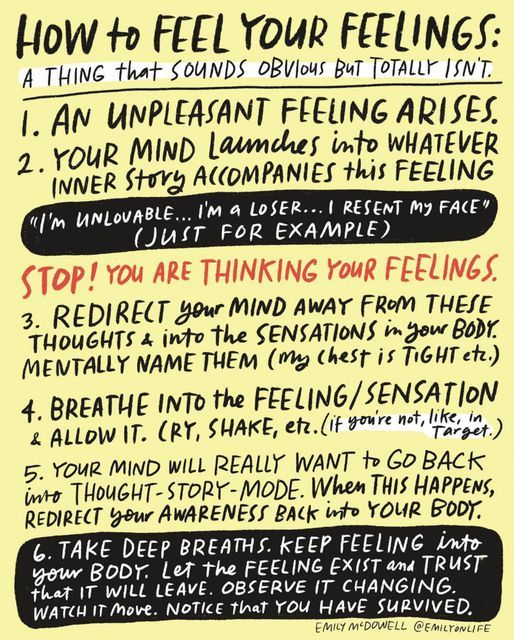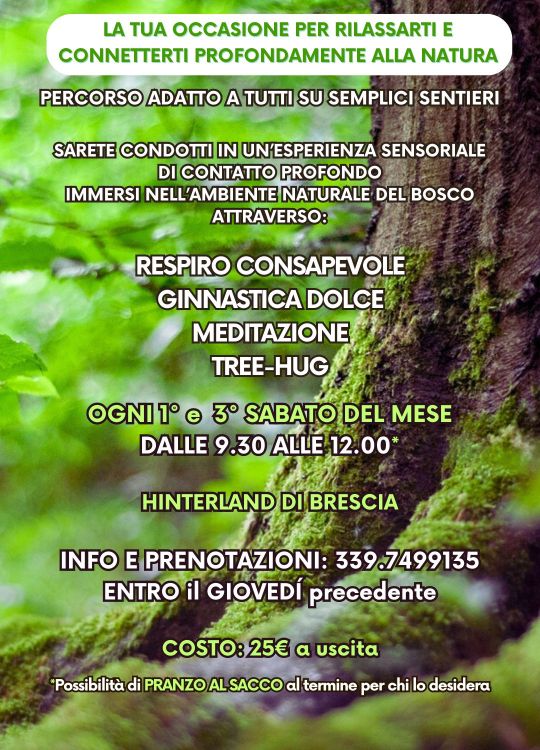#bodymind
Text
chronic fatigue from mental illness and neurodivergency isn't something you can just will your way out of. your nervous system is part of your body. your brain is an organ. the fatigue is real. you're not lazy. so be kinder to yourself. be gentler with your bodymind.
#softspoonie#chronic fatigue#fatigue#mental health#mental illness#chronic illness#chronically ill#mentally ill#neurodivergent#bodymind#depression#anxiety#autistic burnout#disability#disabled
88K notes
·
View notes
Text

Inward by Yung Pueblo
#inward#yung pueblo#quote#typography#diego perez#literature#aesthetic#dark academia#light academia#celestial#the self#bodymind#stars#modern poetry#south american poets
721 notes
·
View notes
Photo

"The body remembers, the bones remember, the joints remember, even the little finger remembers. Memory is lodged in pictures and feelings in the cells themselves. Like a sponge filled with water, anywhere the flesh is pressed, wrung, even touched lightly, a memory may flow out in a stream."
~ Clarissa Pinkola Estes
#quotes#Dr. Clarissa Pinkola Estes#felt sense#feelings#feeling#the body remembers#breathe#emotion#thought#bodymind
1K notes
·
View notes
Text
"Here are 6 ways to regulate yourself using neuropsychology:
If you are stressed, use the physiological sigh. Huberman lab talks about it, but it’s essentially two inhales and one long exhale, and you do that over and over again.
If you are anxious, go for a walk. It deactivates your amygdala.
If you are sad, acknowledge your feelings and then move your body. it release endorphins.
If you are impulsive, like angry. You can’t think straight. Look out the window and don’t look at anything. Just like dilate your gaze. It blunts your neuroadrenaline so you can think clearly.
If you have low motivation, this is interesting ~ focus on one spot on your screen for one minute. Ignore everything else. Pupilary convergence increases focus.
And finally, if you’re feeling insecure, low self-worth, write down your strengths. Logical thinking overrides your limbic system."
~ Ana Del Castillo / Women's Rightness & Empowerment Expert
*
#stress#Body Alive#advice#wisdom#brain gym#emotions#felt sense#feelings#endorphins#bodymind#Ana Del Castillo#quotes
58 notes
·
View notes
Text

"bodymind"
Image: an emoji yellow figure with red brain and nervous system.
#aac symbol#aac image#communication symbol#communication image#custom emoji#aac emoji#body#bodymind#nervous system
18 notes
·
View notes
Text
When I say I am Disabled, I mean a multitude of things, including that there are some things I cannot do because a lot of life is made inaccessible to me by a disabling environment.
That’s not me being bitter or negative. It’s a truth that the Social Model of Disability has helped me to understand.
I don’t really blame my bodymind for the things that I can’t do, I blame disabling surroundings, because it’s the disabling surroundings that render parts of life inaccessible to me.
If I’m in a room with really loud music or people shouting, and it’s bothering me, what if the problem there isn’t MY sensitive ears?
What if there’s nothing wrong with me or my ears at all?
What if the music is just too loud?
When I’m alone in my apartment, flapping my hands and pacing and vocal stimming without shame…No social anxiety or pressures to mask my Autism…When there’s a dinner menu that includes multiple things that I can eat...When people communicate clearly and kindly to me…
...I don’t feel as Disabled as I do when I am trapped in a room with a bunch of loud, crowded people making ableist jokes, for example.
I think we center so much of disability in the physical body and in the brain, and not enough of it in our surroundings.
And plot twist: our surroundings are nearly always constructed without disabled people in mind.
#autism#neurodiversity#neurodivergent#actually autistic#accessibility#disability justice#disability#disabled#invisible disability#autistic#ableism#social model of disability#stimming#my words#bodymind
143 notes
·
View notes
Text
Pandora doesn’t want to look into the big end of the telescope and see, jewel-bright, distinct, tiny and entire, the Valley. She shuts her eyes, she doesn’t want to see, she knows what she will see: Everything Under Control. The dolls’ house. The dolls’ country.
Pandora rushes out of the observatory with her eyes shut, grabbing, grabbing with her hands. What does she get, besides cut hands? Bits, chunks, fragments, Shards. Pieces of the Valley, lifesize. Not at a distance, but in the hand, to be felt and held and heard. Not intellectual, but mental. Not spiritual, but heavy. A piece of madrone wood, a piece of obsidian. A piece of blue clay. Even if the bowl is broken (and the bowl is broken), from the clay and the making and the firing and the pattern, even if the pattern is incomplete (and the pattern is incomplete), let the mind draw its energy. Let the heart complete the pattern.
Always Coming Home - Ursula K Le Guin, 1985
#ursula k le guin#ursula le guin#community#embodiment#knowledge-making#sensation#animal worlding#bodymind
2 notes
·
View notes
Text
We need the word "bodymind" to fuck off. All the way off the entire universe.
It is so singlet-centric and completely nonsensical to our own experiences, and its rising popularity is fucking gross.
4 notes
·
View notes
Text
NOVITÀ!!! DA MAGGIO: 2 IMMERSIONI IN NATURA al mese!
Sabato 4 > Monte Tesio - vicino a Serle
Sabato 18 > Monte Orfano - Rovato


Prenotati in tempo e approfitta dello SCONTO!!!
📞339 749 9135
#forest bathing#shinrin yoku#bioenergetica#biofilia#mindfulness#meditazione#antistress#bodymind#consapevolezza#natura#wellness#benessere#tree hug#tree huggers#walking meditation
0 notes
Text
Alternative Medical Apocrypha

Body always follows Mind!
Your Missing Link to Permanent Health & HealingMind-Pattern AnalysisAll Health & Healing is Within YouYou Already Have Your Solutions
Everything in the outer world only exists as a reflection of what is already within you.Medications, plants, herbs, food, vitamins and minerals can be wonderful boosts to the Mind-Pattern when used correctly and in balance.
But nothing external ever permanently cures any physical illness or disease until you address the mental/emotional reasons for the physical condition in the first place.
https://www.expansions.com/product/alternative-medical-apocrypha
0 notes
Text
Soulful Travel Retreats: Becoming Aware of Meaning and Purpose
Retreats elevate travel into a sacred journey of self-evolution. Nurturing soul´s odyssey. As life revolves around this designed experience that catalyzes lasting shifts in perspective and behavior, to live a life full of purpose and everlasting meaning.
In a fast-paced world, bustling with activity, where life experiences can drown our innermost desires, the need for genuine connections, introspection, and alignment with our purpose has never been greater.
The concept of retreat experiences as a guiding light, supported by Circadian Retreats, offers a haven for the seeking to unearth deeper meaning, searching, and finding the sanctuaries and…

View On WordPress
#Adventure#Awareness#Bodymind#Consciousness#Meaning#Meditation#Personalgrowth#Purpose#Retreat#Self-care#Spirituality#Travel#Wellness
0 notes
Text
"physical" effects from "mental" disorders aren't just a side effect of the condition. they are an inherent part of the condition, and they have real rammifications for things like your heart or gut health, for your sleep and metabolic system, for everything in your body. your brain and nerves are all part of your body. the fatigue matters. the high blood pressure matters. the fainting matters. the lack of, or excessive, appetite matters.
all of it matters, all of it disables you, and all of it needs recognition and caring to. don't let weird gatekeeping online or ableism from society at large stop you from being kind to yourself. be disabled, be neurodivergent, be crippled, be a spoonie, and do it unashamedly. all chronic illnesses and neurological conditions matter. you got this and i'm with you.
sincerely, a disabled person whose "mental" conditions cripple them as much as their "physical" ones.
#softspoonie#neuropunk#madpunk#cripplepunk#cpunk#crippunk#crip punk#cripple punk#neurodivergent#chronically ill#neurological condition#neurodiversity#chronic illness#spoonie#disabled#disabled community#disability#sanism#ableism#bodymind
2K notes
·
View notes
Text

Alcestis by Euripides (tr. Richard Aldington)
#alcestis#euripides#richard aldington#quote#typography#literature#dark academia#classic academia#dark things#the self#bodymind#ancient greek literature#ancient greek mythology#mythology#plays
158 notes
·
View notes
Text
In Vogue’s 1969 Christmas issue, Vladimir Nabokov offered some advice for teaching James Joyce’s “Ulysses”: “Instead of perpetuating the pretentious nonsense of Homeric, chromatic, and visceral chapter headings, instructors should prepare maps of Dublin with Bloom’s and Stephen’s intertwining itineraries clearly traced.” He drew a charming one himself. Several decades later, a Boston College English professor named Joseph Nugent and his colleagues put together an annotated Google map that shadows Stephen Dedalus and Leopold Bloom step by step. The Virginia Woolf Society of Great Britain, as well as students at the Georgia Institute of Technology, have similarly reconstructed the paths of the London amblers in “Mrs. Dalloway.”
Such maps clarify how much these novels depend on a curious link between mind and feet. Joyce and Woolf were writers who transformed the quicksilver of consciousness into paper and ink. To accomplish this, they sent characters on walks about town. As Mrs. Dalloway walks, she does not merely perceive the city around her. Rather, she dips in and out of her past, remolding London into a highly textured mental landscape, “making it up, building it round one, tumbling it, creating it every moment afresh.”
Since at least the time of peripatetic Greek philosophers, many other writers have discovered a deep, intuitive connection between walking, thinking, and writing. (In fact, Adam Gopnik wrote about walking in The New Yorker just two weeks ago.) “How vain it is to sit down to write when you have not stood up to live!” Henry David Thoreau penned in his journal. “Methinks that the moment my legs begin to move, my thoughts begin to flow.” Thomas DeQuincey has calculated that William Wordsworth—whose poetry is filled with tramps up mountains, through forests, and along public roads—walked as many as a hundred and eighty thousand miles in his lifetime, which comes to an average of six and a half miles a day starting from age five.
What is it about walking, in particular, that makes it so amenable to thinking and writing? The answer begins with changes to our chemistry. When we go for a walk, the heart pumps faster, circulating more blood and oxygen not just to the muscles but to all the organs—including the brain. Many experiments have shown that after or during exercise, even very mild exertion, people perform better on tests of memory and attention. Walking on a regular basis also promotes new connections between brain cells, staves off the usual withering of brain tissue that comes with age, increases the volume of the hippocampus (a brain region crucial for memory), and elevates levels of molecules that both stimulate the growth of new neurons and transmit messages between them.
The way we move our bodies further changes the nature of our thoughts, and vice versa. Psychologists who specialize in exercise music have quantified what many of us already know: listening to songs with high tempos motivates us to run faster, and the swifter we move, the quicker we prefer our music. Likewise, when drivers hear loud, fast music, they unconsciously step a bit harder on the gas pedal. Walking at our own pace creates an unadulterated feedback loop between the rhythm of our bodies and our mental state that we cannot experience as easily when we’re jogging at the gym, steering a car, biking, or during any other kind of locomotion. When we stroll, the pace of our feet naturally vacillates with our moods and the cadence of our inner speech; at the same time, we can actively change the pace of our thoughts by deliberately walking more briskly or by slowing down.
VIDEO FROM THE NEW YORKER :: The Men Walking Every Block in New York City
Because we don’t have to devote much conscious effort to the act of walking, our attention is free to wander—to overlay the world before us with a parade of images from the mind’s theatre. This is precisely the kind of mental state that studies have linked to innovative ideas and strokes of insight. Earlier this year, Marily Oppezzo and Daniel Schwartz of Stanford published what is likely the first set of studies that directly measure the way walking changes creativity in the moment. They got the idea for the studies while on a walk. “My doctoral advisor had the habit of going for walks with his students to brainstorm,” Oppezzo says of Schwartz. “One day we got kind of meta.”
In a series of four experiments, Oppezzo and Schwartz asked a hundred and seventy-six college students to complete different tests of creative thinking while either sitting, walking on a treadmill, or sauntering through Stanford’s campus. In one test, for example, volunteers had to come up with atypical uses for everyday objects, such as a button or a tire. On average, the students thought of between four and six more novel uses for the objects while they were walking than when they were seated. Another experiment required volunteers to contemplate a metaphor, such as “a budding cocoon,” and generate a unique but equivalent metaphor, such as “an egg hatching.” Ninety-five per cent of students who went for a walk were able to do so, compared to only fifty per cent of those who never stood up. But walking actually worsened people’s performance on a different type of test, in which students had to find the one word that united a set of three, like “cheese” for “cottage, cream, and cake.” Oppezzo speculates that, by setting the mind adrift on a frothing sea of thought, walking is counterproductive to such laser-focussed thinking: “If you’re looking for a single correct answer to a question, you probably don’t want all of these different ideas bubbling up.”
Where we walk matters as well. In a study led by Marc Berman of the University of South Carolina, students who ambled through an arboretum improved their performance on a memory test more than students who walked along city streets. A small but growing collection of studies suggests that spending time in green spaces—gardens, parks, forests—can rejuvenate the mental resources that man-made environments deplete. Psychologists have learned that attention is a limited resource that continually drains throughout the day. A crowded intersection—rife with pedestrians, cars, and billboards—bats our attention around. In contrast, walking past a pond in a park allows our mind to drift casually from one sensory experience to another, from wrinkling water to rustling reeds.
Still, urban and pastoral walks likely offer unique advantages for the mind. A walk through a city provides more immediate stimulation—a greater variety of sensations for the mind to play with. But, if we are already at the brink of overstimulation, we can turn to nature instead. Woolf relished the creative energy of London’s streets, describing it in her diary as “being on the highest crest of the biggest wave, right in the centre & swim of things.” But she also depended on her walks through England’s South Downs to “have space to spread my mind out in.” And, in her youth, she often travelled to Cornwall for the summer, where she loved to “spend my afternoons in solitary trampling” through the countryside.
Perhaps the most profound relationship between walking, thinking, and writing reveals itself at the end of a stroll, back at the desk. There, it becomes apparent that writing and walking are extremely similar feats, equal parts physical and mental. When we choose a path through a city or forest, our brain must survey the surrounding environment, construct a mental map of the world, settle on a way forward, and translate that plan into a series of footsteps. Likewise, writing forces the brain to review its own landscape, plot a course through that mental terrain, and transcribe the resulting trail of thoughts by guiding the hands. Walking organizes the world around us; writing organizes our thoughts. Ultimately, maps like the one that Nabokov drew are recursive: they are maps of maps.
Why Walking Helps Us Think
By Ferris Jabr
48 notes
·
View notes
Text
At This Moment
“It is not the body that is important but the atmosphere around it. The atmosphere becomes permeated with this finer vibration, in the stillness. And another quality is there.
An axis begins to appear, of pure attention. There is a sensitivity. This atmosphere, filled with energy. The body, like an envelope.
Respect this atmosphere, this energy contained in the body. And then, even subtler energies can come into you—the Light can come into you.
All my thoughts, feelings, ideas are nothing compared to this precious treasure, this quality of energy that is not mine but what I am.
More and more, with attending to presence, allo'wing higher forces to enter, staying collected, returning, we can live in a new way.
You can serve this energy. And the energy can heal. From it can come my best action in the world, my best action for others. Help each other through living in this pure Attention.”
~ Michel de Salzmann, quoted in Fran Shaw's 'Notes on The Next Attention'
#Michel de Salzmann#Fran Shaw#Notes on the Next Attention#quotes#energy#pure attention#body#bodymind
12 notes
·
View notes
Text






#FitLife#Krachttraining#Gains#FitnessMotivatie#Deload#Herstel#GezondLeven#SterkerWorden#FitFamNL#TrainSlim#BodyMind#FitNederland#GymLife#GezondeGewoontes#BlijfGemotiveerd#TrainHard#FitNieuws#WorkoutTijd#FitTips#MotivatieMaandag#DoeMee#FitnessGemeenschap#LichaamEnGeest#TrainSamen#BewegingIsLeven#SamenSterk
0 notes